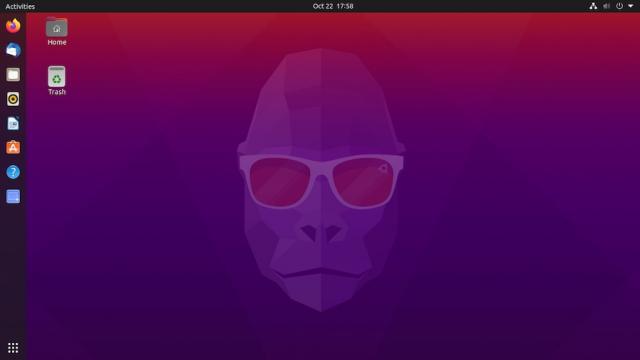
Cloud computing has become a cornerstone for the digital transformation of businesses. From startups to large enterprises, the need for scalable, reliable, and cost-effective cloud services is more pressing than ever. Recognizing this demand, cloud service giants like Microsoft Azure and Amazon Web Services (AWS) offer Free Tier plans, allowing companies and individuals to explore their cloud environments without immediate financial commitment.
But when it comes to choosing between Azure Free Tier and AWS Free Tier, the decision isn’t always straightforward. Each offers a unique set of services and benefits aimed at attracting a variety of user needs. So, which free tier offers the best value for your specific requirements? Is it Microsoft’s Azure, with its strong integration with other Microsoft products and straightforward pricing? Or is it AWS, known for its technical robustness and comprehensive range of services?
This article will walk you through the key offerings of Azure Free Tier and AWS Free Tier, outlining the specific products you can use under each and discussing how to evaluate them based on your business needs, technical expertise, and long-term cloud strategy. By the end, you’ll be better equipped to make an informed choice between these two cloud computing titans.
What Is Azure Free Tier?
The Azure Free Tier provides free access to services in the Microsoft Azure cloud platform. The free tier helps individuals and businesses explore the capabilities of Azure without an initial financial commitment and optimize their Azure costs.
The Azure Free Tier includes more than 25 products that are always free, some products with a 12-month free period, and $200 in Azure credits for 30 days. This means that you can experiment with different services without worrying about costs. However, it’s essential to understand that the free tier has certain usage limits, understand Azure pricing, and keep a check on the consumption to avoid any surprise charges.
Which Products Can You Use With Azure Free Tier?
Azure Virtual Machines
Azure Virtual Machines (VMs) provide the flexibility of virtualization without the need to buy and maintain the physical hardware that runs it. Azure VMs can be used for many scenarios. For instance, they can host infrastructure services like DNS, DHCP, and file shares, or they can be used to deploy highly available, highly scalable applications.
As part of the Azure Free Tier, you get 750 hours of B1S VM Windows Server and 750 hours of B1S VM Linux each month for one year. This essentially means you can run 2 VMs for free, 24/7 for a whole month. However, it’s crucial to remember that if you exceed the free tier limits, you’ll be charged at the standard rates.
Azure SQL Database
Azure SQL Database, Microsoft’s fully managed cloud relational database service, is another key product in the Azure Free Tier. It offers broad SQL Server engine compatibility, so you can migrate your SQL Server databases without changing your apps. It provides automatic backups, patching, and more, all managed by Microsoft.
With Azure Free Tier, you get 250GB of SQL Database at S0 performance level for 12 months. This is an excellent opportunity for businesses to explore Azure SQL Database’s capabilities. However, like with Azure VMs, if your usage exceeds the free tier limit, you’ll be charged at the standard rates.
Azure Cosmos DB
Azure Cosmos DB, Microsoft’s globally distributed, multi-model database service, is also included in the Azure Free Tier. With turnkey global distribution, automatic scaling, and fast, millisecond responses, it’s a great tool for businesses aiming for a global reach.
The Azure Free Tier provides 5GB of storage and 400 Request Units per second of Azure Cosmos DB per month for free. This gives businesses the chance to try out Azure Cosmos DB’s global distribution capabilities and build globally-distributed apps.
Azure App Service
Azure App Service, a fully managed platform for building, deploying, and scaling web apps, is another valuable offering in the Azure Free Tier. You can quickly build, deploy, and scale enterprise-grade web, mobile, and API apps running on any platform.
The Azure Free Tier includes 10 web, mobile, or API apps with Azure App Service with 1GB storage for free. This provides a robust platform for developers to build and deploy a variety of apps.
Azure Functions
Azure Functions, the serverless compute service, lets you run your code without provisioning or managing infrastructure. It’s an event-driven, compute-on-demand experience that extends the existing Azure application platform with capabilities to implement code triggered by events occurring in Azure or third-party services.
In the Azure Free Tier, you get 1 million requests and 400,000 GB-s of resource consumption per month with Azure Functions. This allows developers to experiment with serverless architectures and build scalable event-driven applications.
Azure Event Grid
Azure Event Grid, a fully managed event routing service, is also part of the Azure Free Tier. It enables you to easily build applications with event-based architectures.
You get 100,000 operations per month for free with Azure Event Grid. This gives you the opportunity to explore how Azure Event Grid can simplify your event-based applications and make them more reliable.
What Is AWS Free Tier?
The Amazon Web Services (AWS) Free Tier is an offering for users who want to explore Amazon’s extensive cloud platform without immediate financial commitment. The free tier includes three types of offerings:
- 12 Months Free allows you to use specific AWS services up to a specified maximum each month, for 12 months after your AWS sign-up date.
- Always Free offers limited usage of certain resources beyond the initial 12-month promotional period.
- Trials provide short-term free trial offers starting from the day you activate a particular service.
However, it’s worth noting that while the AWS Free Tier offers a fantastic opportunity to get started with cloud computing, users need to be mindful of their resource usage. Using the free tier is just one part of an AWS cost optimization strategy.
Which Products You can Use With the AWS Free Tier?
AWS Free Tier covers a broad spectrum of services, including Amazon EC2, Amazon S3, Amazon RDS, Amazon DynamoDB, Amazon SageMaker, and AWS Lambda.
Amazon EC2
Amazon Elastic Compute Cloud (EC2) forms the backbone of AWS’s cloud computing services. It provides scalable computing capacity, eliminating the need for upfront investment in hardware.
Under the AWS Free Tier, users can access 750 hours of EC2 running Linux, RHEL, or SLES t2.micro instance, or 750 hours of EC2 running Microsoft Windows Server t2.micro instance each month for one year.
Amazon S3
Amazon Simple Storage Service (S3) is a scalable, high-speed, web-based cloud storage service designed for online backup and archiving of data and applications.
With the AWS Free Tier, you can store up to 5GB of standard storage, with 20,000 Get Requests and 2,000 Put Requests.
Amazon RDS
Amazon Relational Database Service (RDS) makes it easy to set up, operate, and scale a relational database in the cloud.
The free tier offers 750 hours of Amazon RDS usage in a db.t2.micro instance running MySQL, MariaDB, PostgreSQL, Oracle BYOL or SQL Server (running SQL Server Express Edition) – enough hours to run a DB Instance continuously each month.
Amazon DynamoDB
Amazon DynamoDB is a fully managed NoSQL database service that provides quick and predictable performance with seamless scalability.
With the AWS Free Tier, you get 25GB storage, and up to 200 million requests per month with DynamoDB.
Amazon SageMaker
Amazon SageMaker is a fully-managed platform that enables developers and data scientists to build, train, and deploy machine learning models quickly.
AWS Free Tier offers 250 hours of t2.medium or t3.medium notebook usage for SageMaker.
AWS Lambda
AWS Lambda is a compute service where you can upload your code and create Lambda functions. AWS Lambda takes care of provisioning and managing the servers that you use to run the code.
With Free Tier, you can request 1M free requests per month and 400,000 GB-seconds of compute time per month.
Please note that this is a simplified guide to the Azure and AWS Free Tiers, and the actual offerings may have more conditions and complexities. Always refer to the official Azure and AWS pricing for the most accurate and updated information.
Azure Free Tier vs. AWS Free Tier: How to Choose?
Choosing between Azure and AWS can be challenging, especially for businesses new to the cloud. Both platforms are robust, feature-rich, and offer a free tier. However, there are several factors to consider when choosing between Azure Free Tier and AWS Free Tier.
Familiarity and Integration
Microsoft’s Azure Free Tier seamlessly integrates with other Microsoft products, making it an excellent option for businesses already using Windows, Office 365, or other Microsoft services. Familiarity with the Microsoft ecosystem simplifies the learning curve, allowing your team to hit the ground running when migrating to the cloud.
Azure also offers robust developer tools and supports a wide range of programming languages, including .NET, Java, PHP, Python, and Node.js. This flexibility allows your developers to work in their preferred language, boosting productivity and efficiency.
On the other hand, AWS offers comprehensive and flexible services but may require more technical expertise to navigate. However, if your team is familiar with Linux and open-source technologies, AWS might be a better fit.
Geographic Reach
When it comes to geographic reach, both Azure and AWS are global leaders. However, Azure has the edge in terms of the number of regions. Microsoft Azure is available in more regions worldwide than any other cloud provider, ensuring your services are accessible to your users no matter where they are.
The extensive reach of Azure also ensures data residency and compliance, allowing businesses to store data in specific regions to comply with local laws and regulations.
However, AWS also has a vast global network, and it was the first to offer cloud services, which gives it a slight edge in terms of maturity and stability.
Future Transition to Paid Services
Another crucial factor to consider is the transition from the free tier to paid services. Both Azure and AWS offer easy transition, but the pricing structures are different.
Azure’s pricing is straightforward and predictable, with no upfront costs. You only pay for what you use, and Azure offers cost management tools to help you monitor and control your expenses.
AWS also uses a pay-as-you-go pricing model, but it can be more complex. AWS charges based on computing power, storage, and other resources used, which can add up quickly if not carefully managed.
However, both platforms offer cost calculators, allowing you to estimate your future costs and plan your budget accordingly.
Conclusion
Choosing between Azure Free Tier and AWS Free Tier depends on your business needs, technical expertise, and budget. Both platforms offer robust services and a range of features to help your business thrive in the cloud. However, Azure’s seamless integration with Microsoft products, extensive geographic reach, and straightforward pricing make it an excellent choice for many businesses.
No matter which platform you choose, embracing cloud computing is a step towards digital transformation, paving the way for a more agile, scalable, and efficient business operation. Remember, the cloud is not just a technology; it’s a strategy. So, choose wisely, and harness the power of the cloud to propel your business forward.
By Gilad David Maayan




